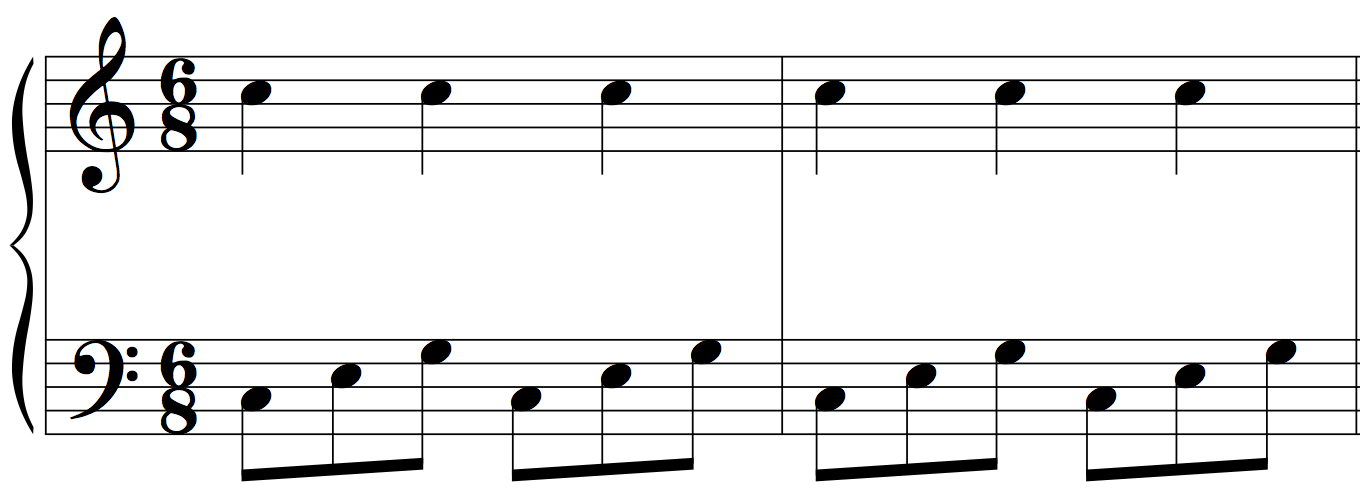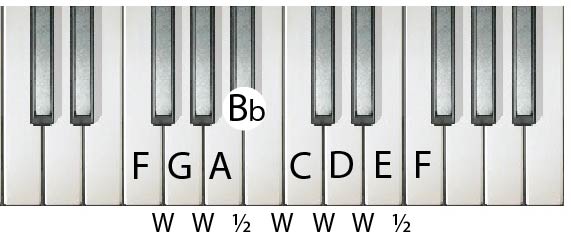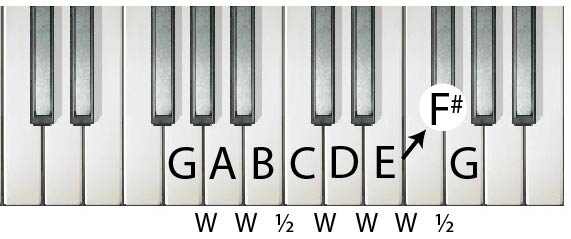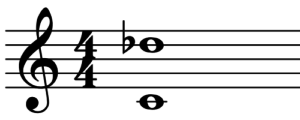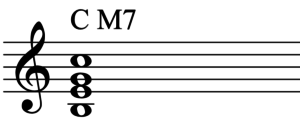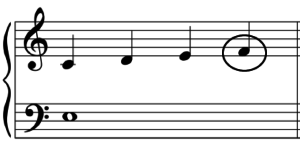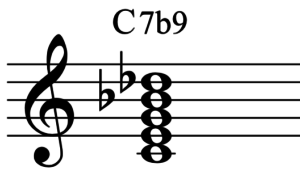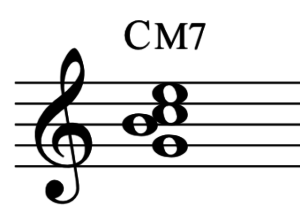An ostinato is a repetitive musical figure that serves as an accompaniment and also adds a driving rhythmic quality to the music. In many ways an ostinato is not too different from a melody. It still relies on chord tones for support. The main distinction is that an ostinato is shorter and more repetitive than a melody.
Here is an example of a simple ostinato in the bass clef part:

Notice how this part repeats the same two note pattern over and over. This is the essence of an ostinato.
Here is an example of a more complex ostinato:

Even though this pattern is more complex, it still has the same repetitious quality. Also note that when the harmony changes in bar 3, the notes of the ostinato move to accommodate. The rhythm and the contour remain the same, even though the notes move slightly to fit the harmony.
To write an ostinato, follow the same steps as writing a melody, except limit the duration to one bar or less. You can do this by using faster notes, such as 8ths or 16ths, using shorter forms with only one or two blocks, and keeping the blocks shorter in duration.
Let’s follow the steps involved in writing an ostinato from scratch. Initially we will write a very short pattern. Then we will see how longer patterns can be created. First, lets use the shortest form of all which is simply “A”.
Next we need to choose a rhythmic pattern. We will select a very short pattern with only two boxes.

Now we need a contour. The contour must have the same number of events as the rhythm, namely two:

If we choose the duration of each box to be worth an 8th note, the resulting chord outline would be something like this:

If we play this pattern over a C major chord in the bass clef, it would look something like this:
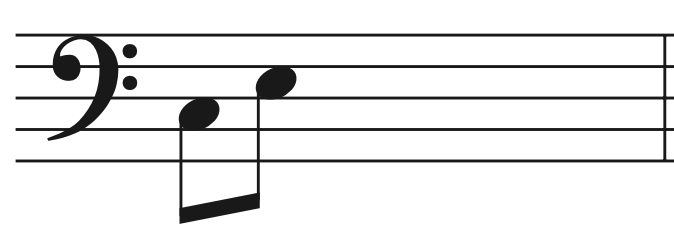
Similar to writing a melody, the next step is to add ornamentation. For the sake of this example, we will add a passing tone between C and E.

Now we simply repeat the figure:

If the chord changes, the chord tones of the ostinato, namely C and E, move to accommodate. The scale tones follow the chord tones:

This time we will write a slightly more complex ostinato. This one will use the form “A B”.
We select two rhythms, again using only two cells per rhythm:
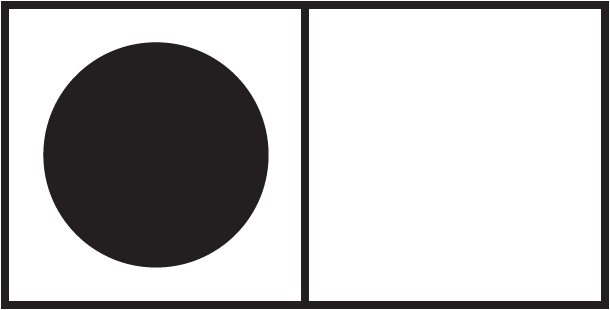

Then we select contours which match those rhythms in terms of number of events:


If we were to write out our melodic outline over C major, this time in treble clef, it would look like this:

As usual the next step is to add ornamentation. We will add a lower neighbor to the first note and leave the other two notes alone. You can also choose other ornamentation options if you desire.

Now we repeat the ostinato:

If the harmony changes, the chord tones move to match the new harmony and the scale tones follow. Here we have placed the ostinato in the treble clef and the chords in the bass to show that ostinatos can be played in a high register as well.

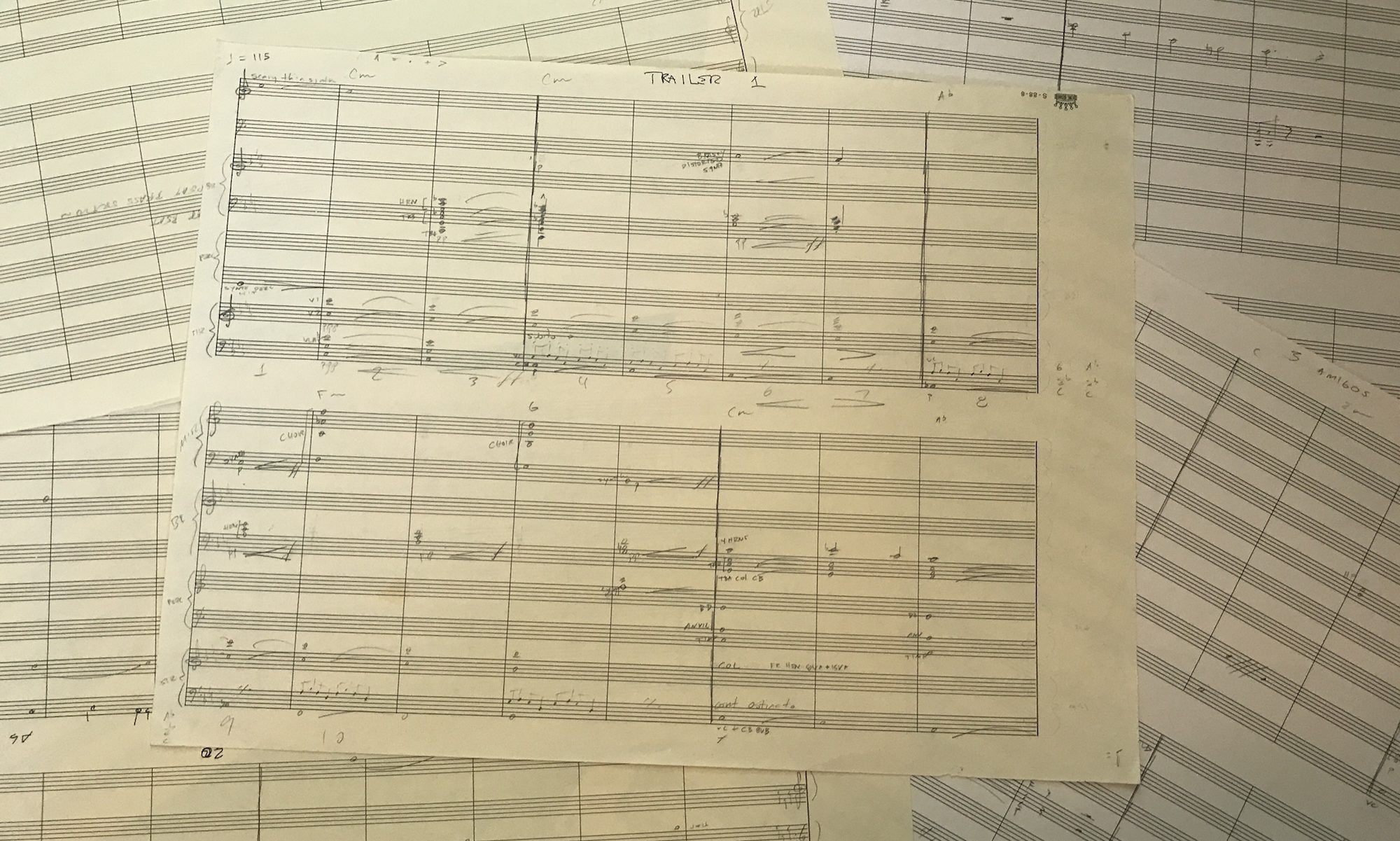





 A contour with the appropriate number of notes can also create a cycling pattern. This is common on new age and popular music:
A contour with the appropriate number of notes can also create a cycling pattern. This is common on new age and popular music:
